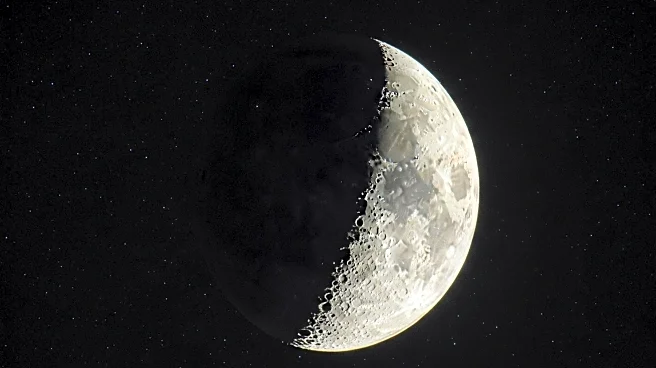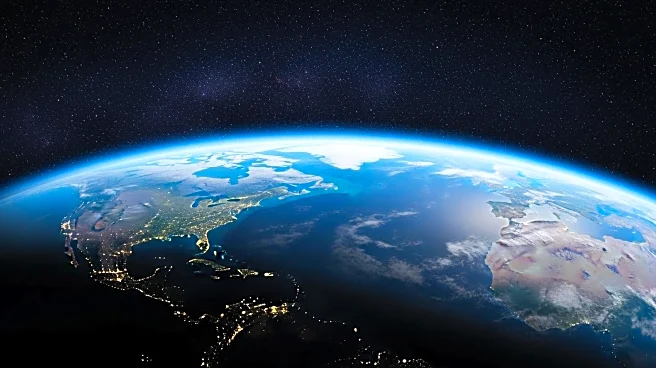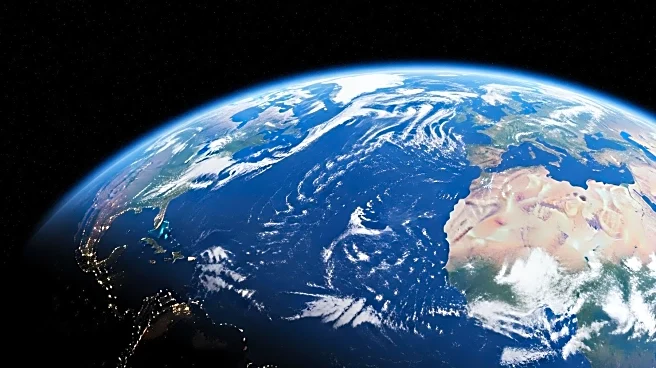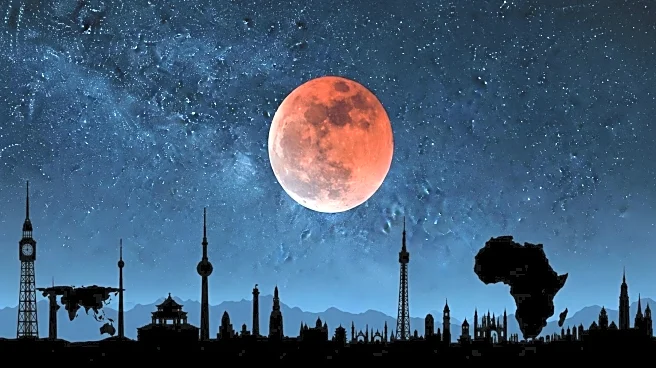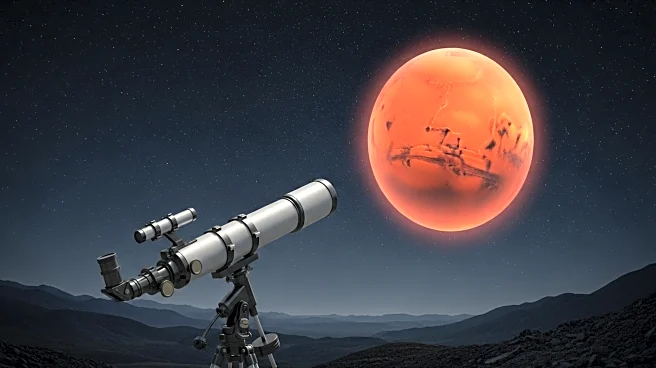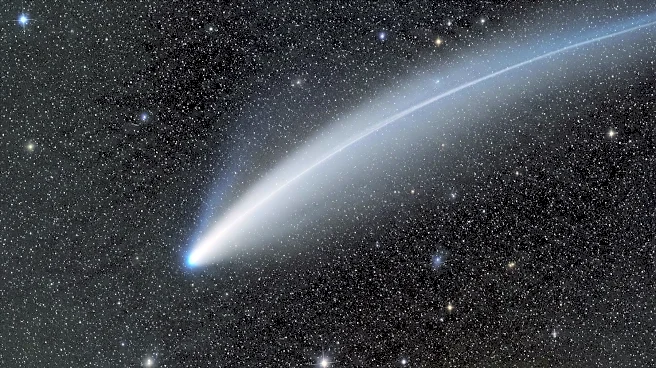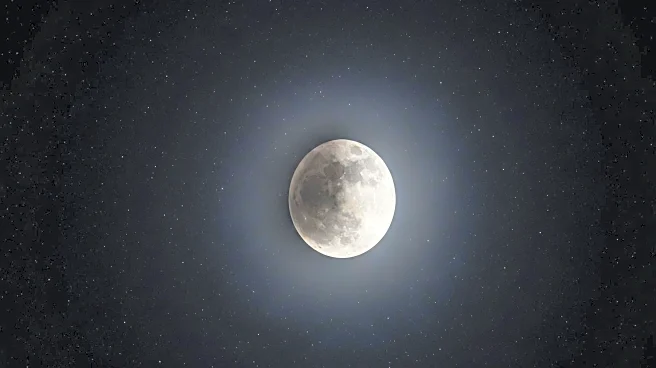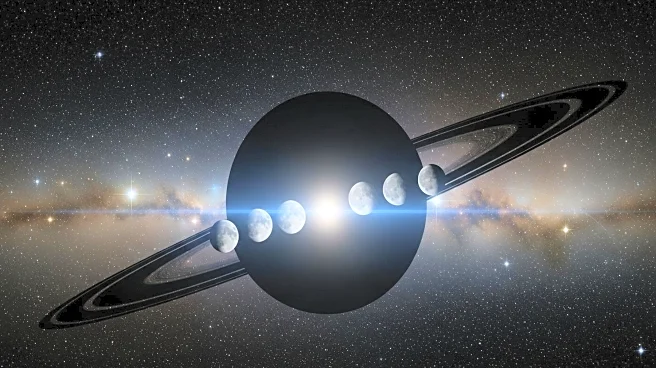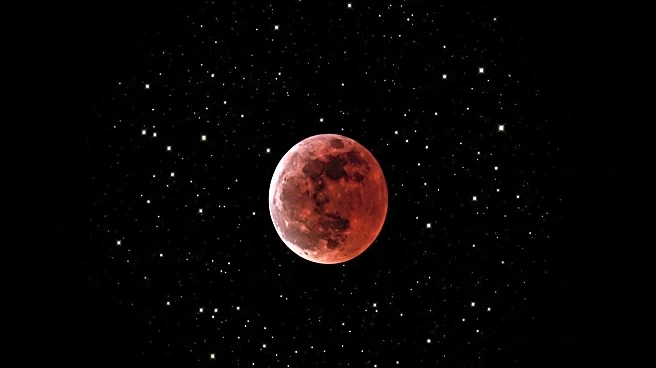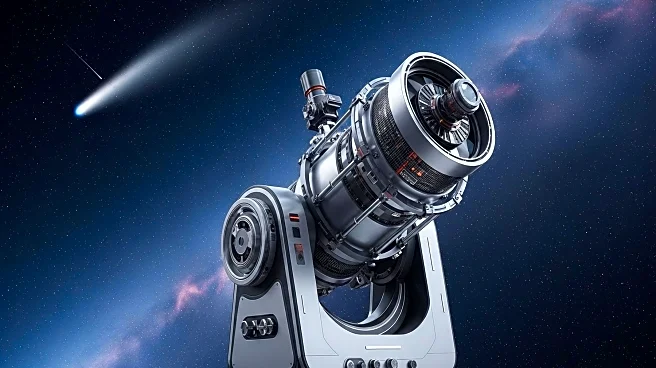What's Happening?
NASA has provided insights into the current lunar phase, which is a Waxing Crescent as of August 28, 2025. During this phase, 25% of the moon is illuminated as observed from Earth. The Waxing Crescent phase is part of the moon's 29.5-day cycle, which results in varying angles between the Sun, Moon, and Earth, causing different portions of the moon to be visible. This cycle includes eight main phases, ranging from New Moon to Full Moon, and back to New Moon. The current phase allows observers to see features such as Mare Crisium and Mare Fecunditatis, with additional details visible through binoculars or telescopes. The next full moon is expected on September 7, following the last full moon on August 9.
Why It's Important?
Understanding the lunar phases is crucial for both scientific research and public interest. These phases affect various aspects of life on Earth, including tides and nocturnal illumination. For astronomers and space enthusiasts, observing the moon's surface features during different phases provides opportunities for study and appreciation of celestial mechanics. The information shared by NASA helps in planning observations and educational activities related to astronomy. Additionally, the predictable nature of lunar phases aids in scheduling events and activities that rely on moonlight, such as night-time navigation and cultural celebrations.
What's Next?
The upcoming full moon on September 7 will offer a complete view of the moon's illuminated surface, providing an ideal opportunity for observation and photography. Astronomers and enthusiasts may plan events or gatherings to take advantage of the full moon's brightness. NASA and other scientific organizations might use this period to conduct studies or public outreach programs to educate people about lunar phenomena. As the lunar cycle continues, each phase will bring new opportunities for exploration and understanding of the moon's impact on Earth.
